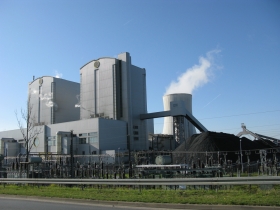Economics of Coal Power Shifting

During the presidential campaign last fall, a single message was repeated endlessly in Appalachian coal country: President Barack Obama and his Environmental Protection Agency, critics said, had declared a "war on coal" that was shuttering U.S. coal-fired power plants and putting coal miners out of work. Not so, according to a detailed analysis of coal plant finances and economics presented here yesterday at the annual meeting of the American Association for the Advancement of Science (which publishes ScienceNOW). Instead, coal is losing its battle with other power sources mostly on its merits.
Although the United States has long generated the bulk of its
electricity from coal, over the past six years that share has fallen
from 50 percent to 38 percent. Plans for more than 150 new coal-fired
power plants have been canceled since the mid-2000s, existing plants
have been closed, and in 2012, just one new coal-fired power plant went
online in the United States. To investigate the reasons for this
decline, David Schlissel, an energy economist and founder of the
Institute for Energy Economics and Financial Analysis in Belmont,
Massachusetts, dove deeply into the broader economics of the industry
and the detailed finances of individual power plants.
Schlissel, who serves as a paid expert witness at state public utility
board hearings for both utilities and advocacy groups that oppose coal
plants, found several reasons for coalís decline. Over the past decade,
construction costs have risen sharply, he said. For example, when the
Prairie State Energy Campus in southern Illinois, which opened last
year, was first proposed, its then-owner, Peabody Coal, said it would
cost $1.8 billion to build. Instead it cost more than $4.9 billion,
Schlissel said.
In addition, since the mid-2000s, the price of natural gas has plummeted, and Schlissel found that when coal-fired power has to compete with natural gas on its economic merits, it struggled. For example, profits from the subset of the nationís coal-fired power plants that sell electricity on the open market plummeted from $20 billion in 2008 to $4 billion in 2011, Schlissel said. And at the giant, 1.6 GW Victor J. Daniel Electric Generating Plant in Escatawpa, Mississippi, which is run by Mississippi Power, has two coal-fired generator and two natural-gas-powered generators. In 2006, the plant got most of its power from the coal generators, which produced 80 percent of the power they could have if they had been running around the clock at full capacity. Meanwhile, the plantís two natural-gas-fired generators produced just 30 percent of the power they were capable of. By 2012, those percentages were reversed: the coal generators produced just 25 percent of their possible power, while the natural-gas generators produced 84 percent.These trends indicate that the company profited by burning natural gas more and coal less, Schlissel said.
Coal powered power plant image via Shutterstock.
Read more at Science.
©2013. Copyright Environmental News Network To subscribe or visit go to: http://www.enn.com